6 books about Rearden, Alice
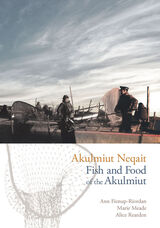
Akulmiut Neqait / Fish and Food of the Akulmiut
Ann Fienup-Riordan, Marie Meade, and Alice Rearden
University of Alaska Press, 2019
For centuries, the Akulmiut people—a Yup’ik group—have been sustained by the annual movements of whitefish. It is a food that sustains and defines them. To this day, many Akulmiut view not only their actions in the world, but their interactions with each other, as having a direct and profound effect on these fish. Not only are fish viewed as responding to human action and intention in many contexts, but the lakes and rivers fish inhabit are likewise viewed as sentient beings, with the ability to respond both positively and negatively to those who travel there.
This bilingual book details the lives of the Akulmiut living in the lake country west of Bethel, Alaska, in the villages of Kasigluk, Nunapitchuk, and Atmautluak. Akulmiut Neqait is based in conversations recorded with the people of these villages as they talk about their uniquely Yup'ik view of the world and how it has weathered periods of immense change in southwest Alaska. While many predicted that globalization would sound the death knoll for many distinctive traditions, these conversations show that Indigenous people all over the planet have sought to appropriate the world in their own terms. For all their new connectedness, the continued relevance of traditional admonitions cannot be denied.
This bilingual book details the lives of the Akulmiut living in the lake country west of Bethel, Alaska, in the villages of Kasigluk, Nunapitchuk, and Atmautluak. Akulmiut Neqait is based in conversations recorded with the people of these villages as they talk about their uniquely Yup'ik view of the world and how it has weathered periods of immense change in southwest Alaska. While many predicted that globalization would sound the death knoll for many distinctive traditions, these conversations show that Indigenous people all over the planet have sought to appropriate the world in their own terms. For all their new connectedness, the continued relevance of traditional admonitions cannot be denied.
[more]
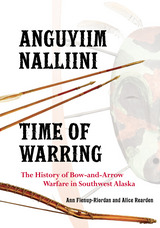
Anguyiim Nalliini/Time of Warring
The History of Bow-and-Arrow Warfare in Southwest Alaska
Ann Fienup-Riordan and Alice Rearden
University of Alaska Press, 2016
This book draws on little-known oral histories from the Yup’ik people of southwest Alaska to detail a period of bow-and-arrow warfare that took place in the region between 1300 and 1800. The result of more than thirty years of research, discussion, and field recordings involving more than one hundred Yup’ik men and women, Anguyiim Nalliini tells a story not just of war and violence, but also of its cultural context—the origins of place names, the growth of indigenous architectural practices, the personalities of prominent warriors and leaders, and the eventual establishment of peaceful coexistence.
The book is presented in bilingual format, with facing-page translations, and it will be hailed as a landmark work in the study of Alaska Native history and anthropology.
The book is presented in bilingual format, with facing-page translations, and it will be hailed as a landmark work in the study of Alaska Native history and anthropology.
[more]
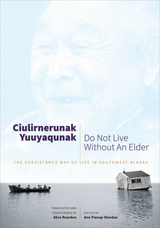
Ciulirnerunak Yuuyaqunak/Do Not Live Without an Elder
The Subsistence Way of Life in Southwest Alaska
Edited by Ann Fienup-Riordan
University of Alaska Press, 2016
In October of 2010, six men who were serving on the board of the Calista Elders Council (CEC) gathered in Anchorage with CEC staff to spend three days speaking about the subsistence way of life. The men shared stories of their early years growing up on the land and harvesting through the seasons, and the dangers they encountered there. The gathering was striking for its regional breadth, as elders came from the Bering Sea coast as well as the Yukon and Kuskokwim rivers. And while their accounts had some commonalities, they also served to demonstrate the wide range of different approaches to subsistence in different regions.
This book gathers the men’s stories for the current generation and those to come. Taken together, they become more than simply oral histories—rather, they testify to the importance of transmitting memories and culture and of preserving knowledge of vanishing ways of life.
This book gathers the men’s stories for the current generation and those to come. Taken together, they become more than simply oral histories—rather, they testify to the importance of transmitting memories and culture and of preserving knowledge of vanishing ways of life.
[more]
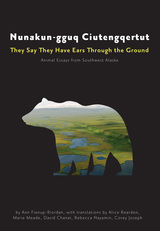
Nunakun-gguq Ciutengqertut/They Say They Have Ears Through the Ground
Animal Essays from Southwest Alaska
Ann Fienup-Riordan
University of Alaska Press, 2020
Lifeways in Southwest Alaska today remains inextricably bound to the seasonal cycles of sea and land. Community members continue to hunt, fish, and make products from the life found in the rivers and sea. Based on a wealth of oral histories collected over decades of research, this book explores the ancestral relationship between Yup’ik people and the natural world of Southwest Alaska. Nunakun-gguq Ciutengqertut studies the overlapping lives of the Yup’ik with native plants, animals, and birds, and traces how these relationships transform as more Yup’ik people relocate to urban areas and with the changing environment. The book will be hailed as a milestone work in the anthropological study of contemporary Alaska.
[more]
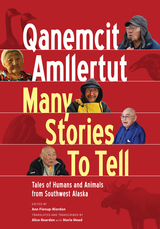
Qanemcit Amllertut/Many Stories to Tell
Tales of Humans and Animals from Southwest Alaska
Edited by Ann Fienup-Riordan
University of Alaska Press, 2017
This bilingual collection shares new translations of old stories recorded over the last four decades though interviews with Yup’ik elders from throughout southwest Alaska. Some are true qulirat (traditional tales), while others are recent. Some are well known, like the adventures of the wily Raven, while others are rarely told. All are part of a great narrative tradition, shared and treasured by Yup’ik people into the present day.
This is the first region-wide collection of traditional Yup’ik tales and stories from Southwest Alaska. The elders and translators who contributed to this collection embrace the great irony of oral traditions: that the best way to keep these stories is to give them away. By retelling these stories, they hope to create a future in which the Yup’ik view of the world will be both recognized and valued.
This is the first region-wide collection of traditional Yup’ik tales and stories from Southwest Alaska. The elders and translators who contributed to this collection embrace the great irony of oral traditions: that the best way to keep these stories is to give them away. By retelling these stories, they hope to create a future in which the Yup’ik view of the world will be both recognized and valued.
[more]
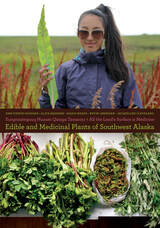
Yungcautnguuq Nunam Qainga Tamarmi/All the Land's Surface is Medicine
Edible and Medicinal Plants of Southwest Alaska
Ann Fienup-Riordan
University of Alaska Press, 2020
In this book, close to one hundred men and women from all over southwest Alaska share knowledge of their homeland and the plants that grow there. They speak eloquently about time spent gathering and storing plants and plant material during snow-free months, including gathering greens during spring, picking berries each summer, harvesting tubers from the caches of tundra voles, and gathering a variety of medicinal plants. The book is intended as a guide to the identification and use of edible and medicinal plants in southwest Alaska, but also as an enduring record of what Yup’ik men and women know and value about plants and the roles plants continue to play in Yup’ik lives.
[more]
READERS
Browse our collection.
PUBLISHERS
See BiblioVault's publisher services.
STUDENT SERVICES
Files for college accessibility offices.
UChicago Accessibility Resources
home | accessibility | search | about | contact us
BiblioVault ® 2001 - 2024
The University of Chicago Press









